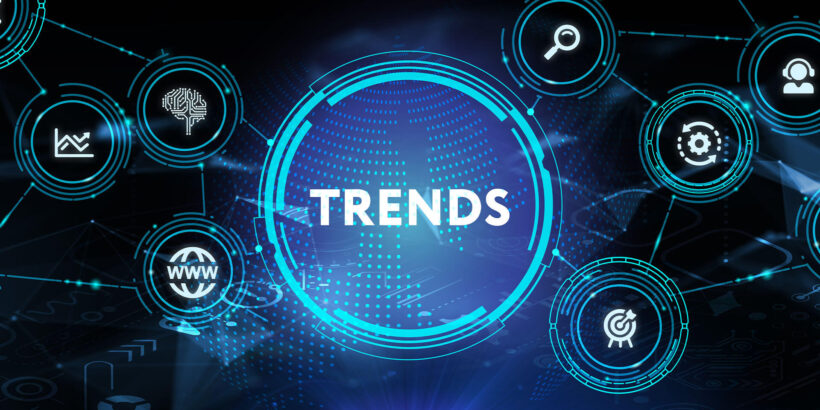Software Trends and Emerging Technologies: Paving the Way for Future Software Development

The software industry is an ever-evolving landscape, continually pushing the boundaries of innovation and ushering in new technologies that redefine how we interact with digital solutions. Staying abreast of the latest trends and emerging technologies is essential for software developers and businesses alike, as they hold the potential to revolutionize software development and shape the future of technology. In this article, we explore some of the most significant software trends and emerging technologies, including blockchain, Internet of Things (IoT), quantum computing, and edge computing, and their potential impact on the future of software development.
-
Blockchain Technology: Decentralized Trust and Transparency
Originally known for powering cryptocurrencies like Bitcoin, blockchain technology has since evolved to disrupt various industries with its decentralized and immutable nature. Blockchain is a distributed ledger that records transactions across multiple computers in a secure and transparent manner.
Smart Contracts: One of the key applications of blockchain is smart contracts, which are self-executing contracts with terms directly written into code. Smart contracts enable automation, security, and trust in various industries, from supply chain management to real estate and finance.
Decentralized Applications (DApps): DApps are applications that run on a decentralized network, leveraging blockchain’s transparency and security. DApps are gaining popularity in areas like gaming, finance, and social media, providing users with more control over their data and interactions.
Identity Management: Blockchain-based identity management solutions offer enhanced security and privacy, reducing the risk of data breaches and identity theft. Users can have greater control over their digital identities, reducing the reliance on centralized authorities.
-
Internet of Things (IoT): A Connected and Intelligent World
The Internet of Things (IoT) is an interconnected network of devices, sensors, and objects that communicate and interact with each other over the internet. IoT is revolutionizing how devices and systems operate, creating a more connected and intelligent world.
Connected Devices: IoT enables the integration of everyday objects, from home appliances to industrial equipment, into the digital ecosystem. This connectivity improves efficiency, enables remote monitoring, and enhances user experiences.
Data Analytics: The vast amount of data generated by IoT devices necessitates advanced data analytics techniques for extracting valuable insights. Real-time analysis of data from IoT devices is crucial for making informed decisions and predicting trends.
Security Challenges: The proliferation of IoT devices raises security concerns, as each connected device becomes a potential entry point for cyber attacks. Ensuring robust security measures is paramount to safeguard sensitive data and maintain user trust.
-
Quantum Computing: Unleashing Exponential Computational Power
Quantum computing is an emerging technology that harnesses the principles of quantum mechanics to perform complex computations at speeds exponentially faster than classical computers.
Quantum Algorithms: Quantum algorithms have the potential to revolutionize data encryption, optimization problems, and machine learning tasks. As quantum computers advance, they may address challenges that are currently computationally infeasible.
Real-World Applications: Quantum computing is still in its early stages, but industries like finance, pharmaceuticals, and cryptography are exploring potential applications to solve complex problems.
-
Edge Computing: Enhancing Real-Time Data Processing
Edge computing is a paradigm that brings computational power closer to the data source, reducing latency and bandwidth usage, and improving real-time data processing.
Latency Reduction: By processing data closer to the source, edge computing minimizes the delay in data transmission, making it ideal for applications requiring immediate response times, such as autonomous vehicles and industrial automation.
Data Privacy: Edge computing reduces the need to transfer sensitive data to centralized cloud servers, enhancing data privacy and security.
Conclusion
Software trends and emerging technologies are shaping the future of software development and driving innovation in the digital landscape. Blockchain technology offers decentralized trust and transparency, revolutionizing various industries. IoT connects devices and objects to create a more intelligent world, while quantum computing promises exponential computational power for complex problem-solving. Edge computing enhances real-time data processing and data privacy.
As these trends continue to evolve, software developers and businesses must embrace the opportunities they present. Adopting and integrating these technologies into software development strategies can lead to more efficient, secure, and advanced solutions that cater to the demands of a digital-driven world. By staying up-to-date with these trends and embracing the possibilities they offer, the software industry can shape a future that empowers individuals and businesses alike. As we embark on this transformative journey, the software industry stands at the forefront of innovation, ready to usher in a new era of technological possibilities.
